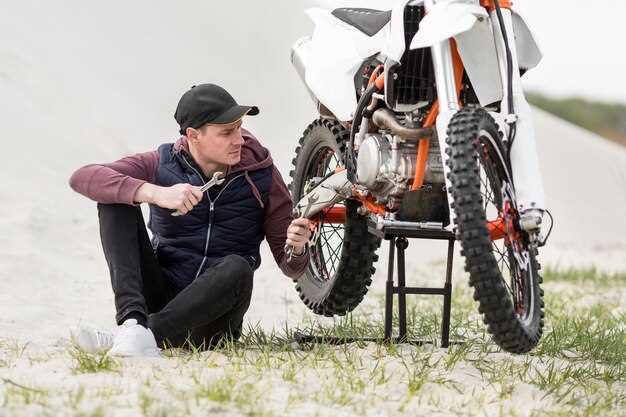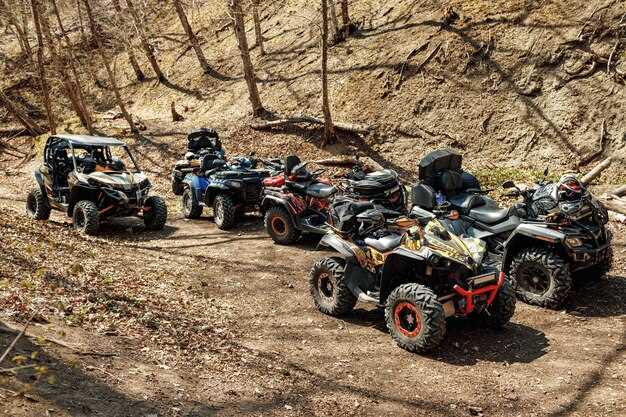
Installing a winch on your ATV can significantly enhance its utility, providing you with the means to tackle more challenging terrains and assist in recovery situations. A winch acts as a powerful tool that can pull, lift, or drag heavy objects, making it an indispensable accessory for off-road enthusiasts.
The installation of a winch can seem daunting, particularly if you are new to ATV modifications. However, with the right tools, materials, and step-by-step guidance, you can successfully complete this project and expand the capabilities of your vehicle. Understanding the components and mechanics involved is essential for ensuring a safe and efficient installation.
This comprehensive guide will walk you through the entire process of winch installation, from selecting the right winch suited for your ATV to mounting it securely and connecting it to your vehicle’s electrical system. Whether you are preparing for an adventurous ride or just want to be prepared for unforeseen circumstances, our guide will equip you with the knowledge needed to enhance your ATV experience.
Choosing the Right Winch for Your ATV

Selecting an appropriate winch for your ATV is crucial for ensuring optimal performance and reliability during your off-road adventures. Start by determining the weight capacity required for your needs. A general rule of thumb is to choose a winch with a pulling capacity that is at least 1.5 times the total weight of your ATV. This ensures that the winch can handle not only the vehicle itself but also any additional loads or equipment.
Consider the type of terrain you will be navigating. For mud, snow, or steep inclines, a winch with a higher pulling power and a heavy-duty construction will provide more confidence. Additionally, evaluate the line length and diameter of the winch cable. A longer cable allows for more versatile use in various situations, while a thicker cable can enhance durability and reduce wear.
Another important feature to assess is the winch’s mounting options. Ensure that your ATV’s frame can accommodate the installation of the winch without compromising the vehicle’s structure. Some winches come with universal mounting plates, making installation easier. Check if the winch includes a wireless remote control, which can enhance convenience during operation.
Lastly, consider the brand and warranty of your chosen winch. Reputable manufacturers typically offer better customer support and longer warranties, reflecting their confidence in the product’s longevity and performance. Investing time in selecting the right winch will significantly enhance your ATV experience, making it more enjoyable and safe.
Step-by-Step Winch Installation Process
Installing a winch on your ATV can enhance its ability to navigate tough terrains and assist in recovery situations. Follow this detailed guide for a successful installation.
Step 1: Gather Necessary Tools and Materials
Before starting the installation process, ensure you have all required tools and materials on hand. You will need a winch, a mounting plate, wiring harness, battery connector, a socket set, wrenches, and possibly a drill if modifications are necessary.
Step 2: Choose the Right Location
Select an appropriate location on your ATV for the winch. The front of the ATV frame is the most common area, ensuring the mounting plate fits securely without obstructing other components.
Step 3: Install the Mounting Plate
Align the mounting plate with the pre-drilled holes on your ATV’s frame. Use the provided bolts and washers to secure it in place. If your ATV lacks holes, carefully drill them according to the manufacturer’s recommendations.
Step 4: Attach the Winch
Gently position the winch onto the mounting plate. Ensure it sits evenly and align the winch bolt holes with the mounting plate. Secure the winch using the bolts provided, tightening them firmly for stability.
Step 5: Install the Wiring Harness
Connect the wiring harness according to the manufacturer’s instructions. Usually, this involves connecting positive and negative wires to the battery terminals. Ensure all connections are tight to prevent electrical issues. Route the cables neatly along the frame to avoid damage from obstacles.
Step 6: Position the Remote Control
Choose a convenient location for the winch’s remote control. This can be mounted on the handlebars or another easily accessible spot. Ensure it is secure and can be reached comfortably while riding.
Step 7: Test the Winch
Before heading out, test the winch to ensure it operates correctly. Engage the winch using the remote control, both for pulling in and releasing the cable. Listen for any unusual sounds that may indicate improper installation.
Step 8: Final Inspection
Conduct a thorough inspection of all connections, mounts, and wiring. Make any necessary adjustments to secure loose components and ensure safe operation during use.
By following this installation guide, you will be well-equipped to enhance your ATV’s capabilities with a winch, providing added safety and utility on your adventures.
Safety Tips and Maintenance for Your ATV Winch

When using a winch on your ATV, safety should always be your top priority. Here are some essential safety tips to consider:
1. Always Wear Protective Gear: When operating your winch, make sure to wear appropriate protective gear, including gloves, safety goggles, and sturdy boots. This protects you from potential accidents and hazards while winching.
2. Inspect Your Equipment Regularly: Before using your winch, conduct a thorough inspection. Look for any signs of wear or damage to the winch cable, hook, or mounting system. Address any issues immediately to prevent failure during operation.
3. Use Proper Winching Techniques: Understand and utilize correct winching techniques. Ensure the winch is anchored securely before use, and do not exceed the winch’s weight capacity. Always keep bystanders at a safe distance when winching.
4. Never Stand in Line with the Cable: In case of cable failure, the winch line can snap back violently. Always stand to the side and never in line with the cable during operation to minimize the risk of injury.
5. Follow Manufacturer Guidelines: Each winch comes with an instruction manual. Familiarize yourself with the specific guidelines provided by the manufacturer regarding operation and safety protocols.
Maintenance Tips: Proper maintenance of your ATV winch is crucial for longevity and efficiency.
1. Clean Regularly: Keep the winch and its components clean from mud, dirt, and debris. Regular cleaning can prevent rust and other damage.
2. Lubricate Moving Parts: Periodically lubricate all moving parts according to the manufacturer’s recommendations to ensure smooth operation and reduce wear.
3. Inspect the Winch Cable: Regularly check for frays, kinks, or signs of wear on the winch cable. A damaged cable should be replaced immediately to ensure safe usage.
4. Test the Winch: Regularly test your winch to ensure it is functioning properly. Make sure to conduct these tests in a safe environment and under controlled conditions.
5. Store Properly: When not in use, store the winch in a dry, cool place. Ensure that the cable is retracted properly to prevent kinking and tangling.
By adhering to these safety tips and maintenance practices, you can ensure your ATV winch remains a reliable tool for all your off-road adventures.
 Skip to the content
Skip to the content 